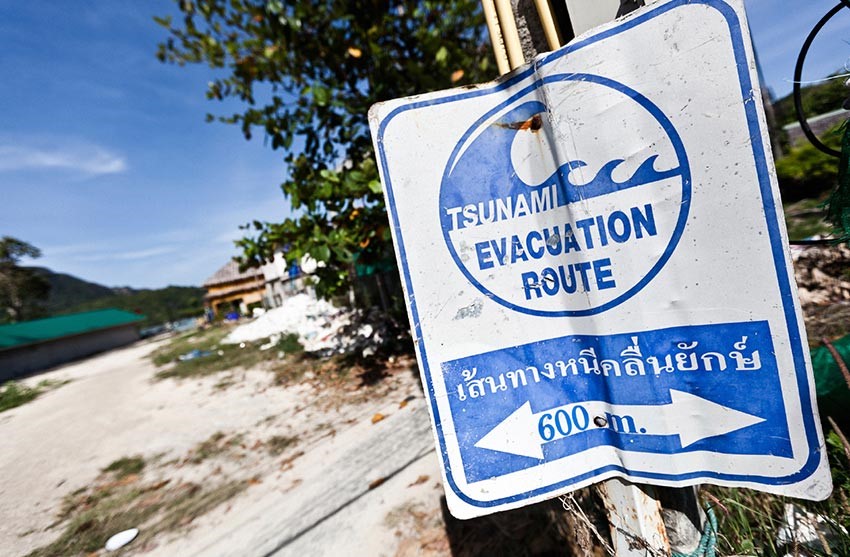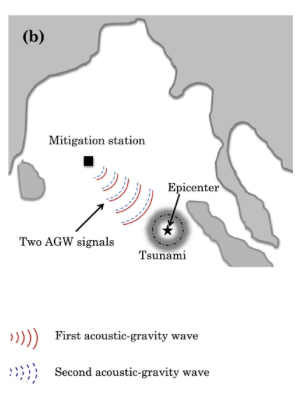
In the last two decades, tsunamis have been responsible for the loss of almost half of a million lives, millions of dollars in property destruction, and profound environmental effects. Such a forceful act of nature may seem like something beyond our control, but Dr. Usama Kadri of Cardiff University’s School of Mathematics believes that it is possible to mitigate the most severe aspects of a tsunami by combating the waves with artificial acoustic-gravity waves (AGW).
Tsunamis are produced by seismic events, such as an underwater earthquake, landslide, or volcanic eruption, which trigger a series of waves that can travel the length of an ocean at speeds of up to 500 mph. The destructive impact on shore is determined by the wavelength and amplitude of the tsunami. Today’s Tsunami Warning Systems use seismological and tidal warning stations that watch for potential earthquakes at sea that could cause a tsunami. The rudimentary warning system gives local residents only minutes to prepare. Previously, Kadri proposed a better system based on AGWs.
In addition to surface waves, tsunamis also generate acoustic-gravity waves, sound waves that propagate in water with amplitudes compressed by gravity. AGWs form with tsunamis and induce pressure disturbances in the entire water column. The measurable pressure signatures marked on the sea floor serve as excellent tsunami precursors and allowing scientists to identify the epicenter location. By installing detection stations deep in the ocean, where AGWs are expected to travel freely in the water column, scientists will be better able to predict the time and force of tsunamis while they are still far out at sea.
What’s more, tsunamis may no longer be an absolute impending danger; Kadri also believes that it is feasible for artificial AGWs to interact with surface-gravity (tsunami) waves and redistribute the total energy of a tsunami wave over a larger space. The theory is based on a three-wave interaction mechanism known as a resonant triad. The triad interaction would be comprised of a single long surface ocean wave, representing the tsunami, and two AGWs. Once a tsunami is identified using the early detection warning system, Kadri’s idea would be to pulsate two finely tuned high-frequency trains of AGWs at incoming tsunamis and disrupt their waveforms to reduce their amplitude. The subsequent wave dispersion would make a tsunami much less powerful and cause much less damage.

Schematic illustration of the proposed mitigation system in which two AGWs are transmitted toward the tsunami to form a resonant triad
The usability of a counter-tsunami system is predicated on the development of a deep-ocean detector network to track and analyze the pressure signatures of tsunamis on the sea floor to allow proper anti-tsunami pulses to be configured to diminish the amplitude of the wave. To generate such AGWs would require sonic transducers large enough to handle the force equivalent to a nuclear warhead.
“In practice, generating the appropriate acoustic-gravity waves introduces serious challenges due to the high energy required for an effective interaction with a tsunami,” says Kadri. Despite the challenges, Kadri’s research shows the potential that AGWs could have in diminishing the disastrous effects of tsunamis.
Sources: Heliyon, News Atlas, National Geographic
Advertisement
Learn more about Electronic Products Magazine





